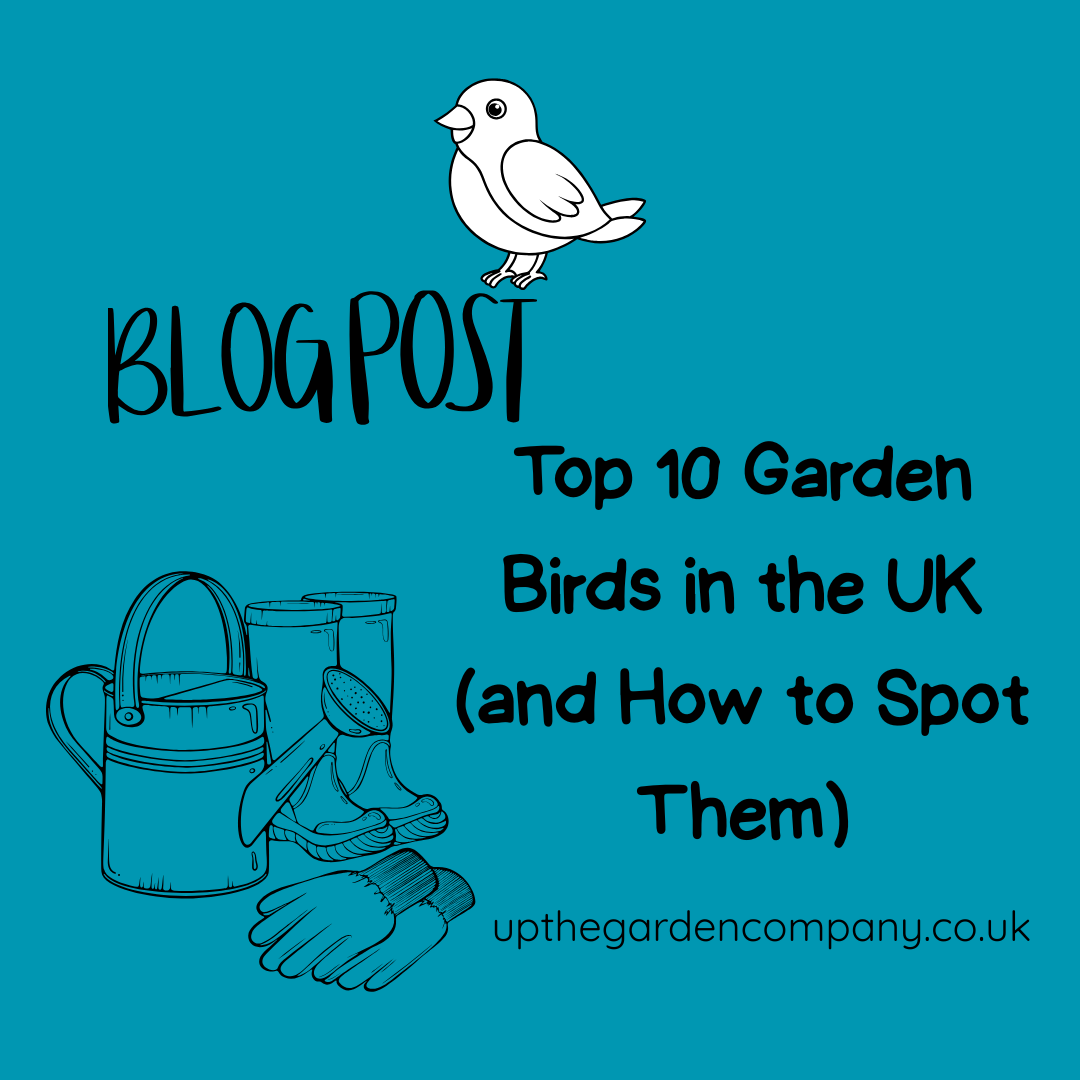Step outside, take a deep breath and listen. That chirping, trilling and tweeting you hear? It’s the joyful soundtrack of garden birds bringing colour, life and melody to your back garden. Grab your binoculars and your favourite brew because we’re about to explore 10 of the UK’s favourite garden birds—their characteristics, fascinating facts and tips on how to identify them.
1. Robin
With its distinctive bright red breast, the robin is undoubtedly an icon of British gardens—and a staple on our Christmas cards. These bold little birds are known for their curious nature and it’s not uncommon to find one perched nearby as you garden.
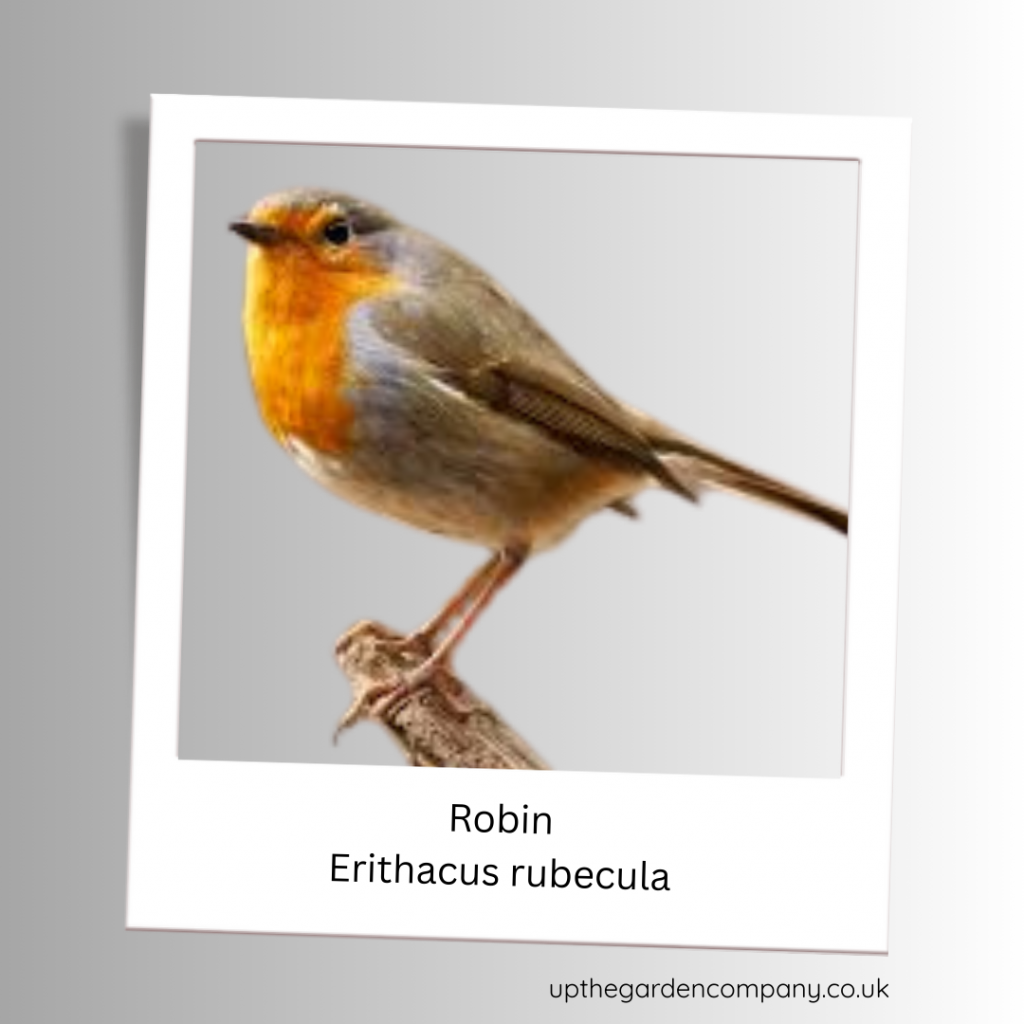
How to Spot:
- Size: About 14cm long, with a small, round body.
- Colours: Bright red breast, brown back and a white belly.
- Fun Fact: Robins are fiercely territorial and will defend their patch year-round.
Tip to Attract Robins:
They adore mealworms and suet pellets. Place these on a bird table or the ground where they feel safe to feed.
2. Blue Tit
A vibrant splash of blue and yellow, the blue tit is a cheerful addition to any garden. Agile and acrobatic, they’re often seen hanging upside down from feeders as they search for snacks!
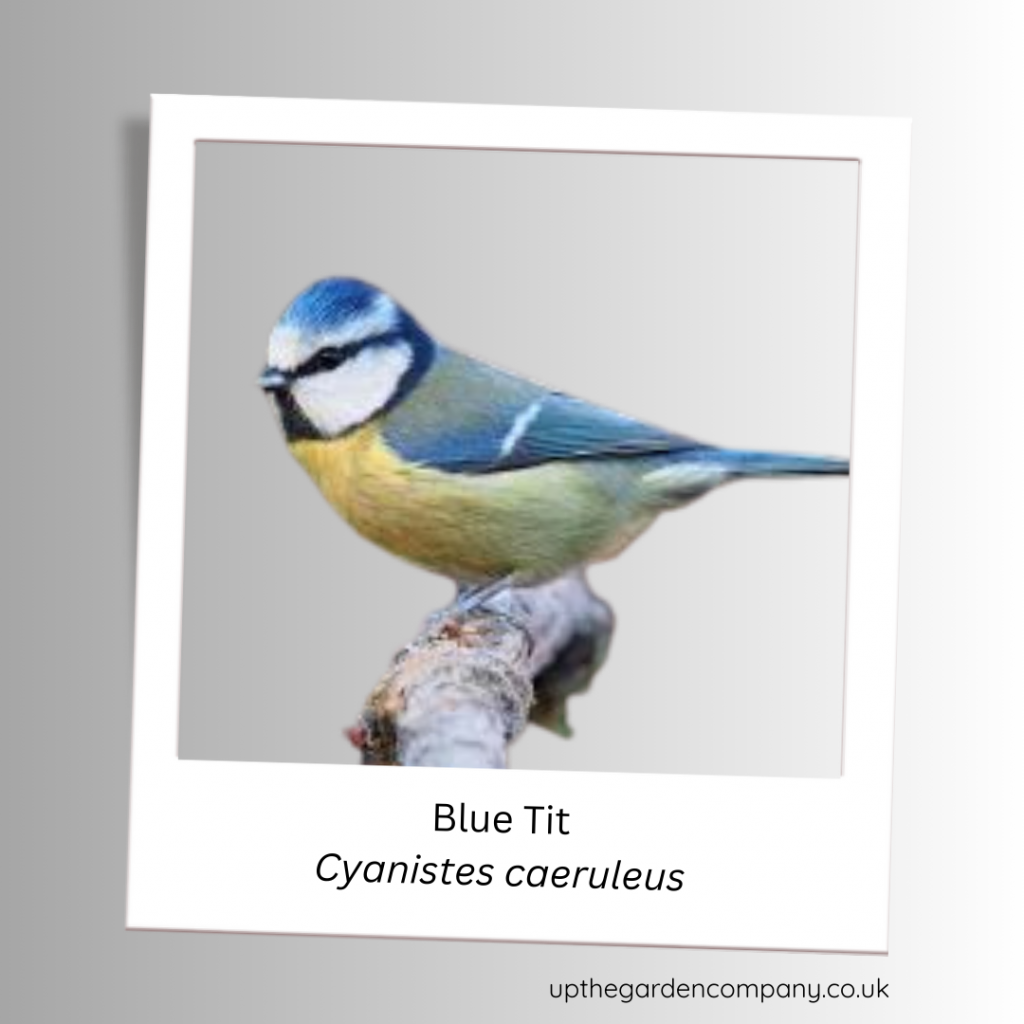
How to Spot:
- Size: Tiny, around 12cm long.
- Colours: Blue cap, yellow underparts and greenish back.
- Fun Fact: A single blue tit can feed its chicks up to 1,000 caterpillars a day!
Tip to Attract Blue Tits:
Offer peanuts, sunflower seeds and fat balls. They also love nesting boxes in spring.
3. Great Tit
Larger than its cousin the blue tit, great tits are equally colourful and energetic. Their two-syllable call, often likened to the phrase “teacher-teacher,” is a familiar sound in gardens.
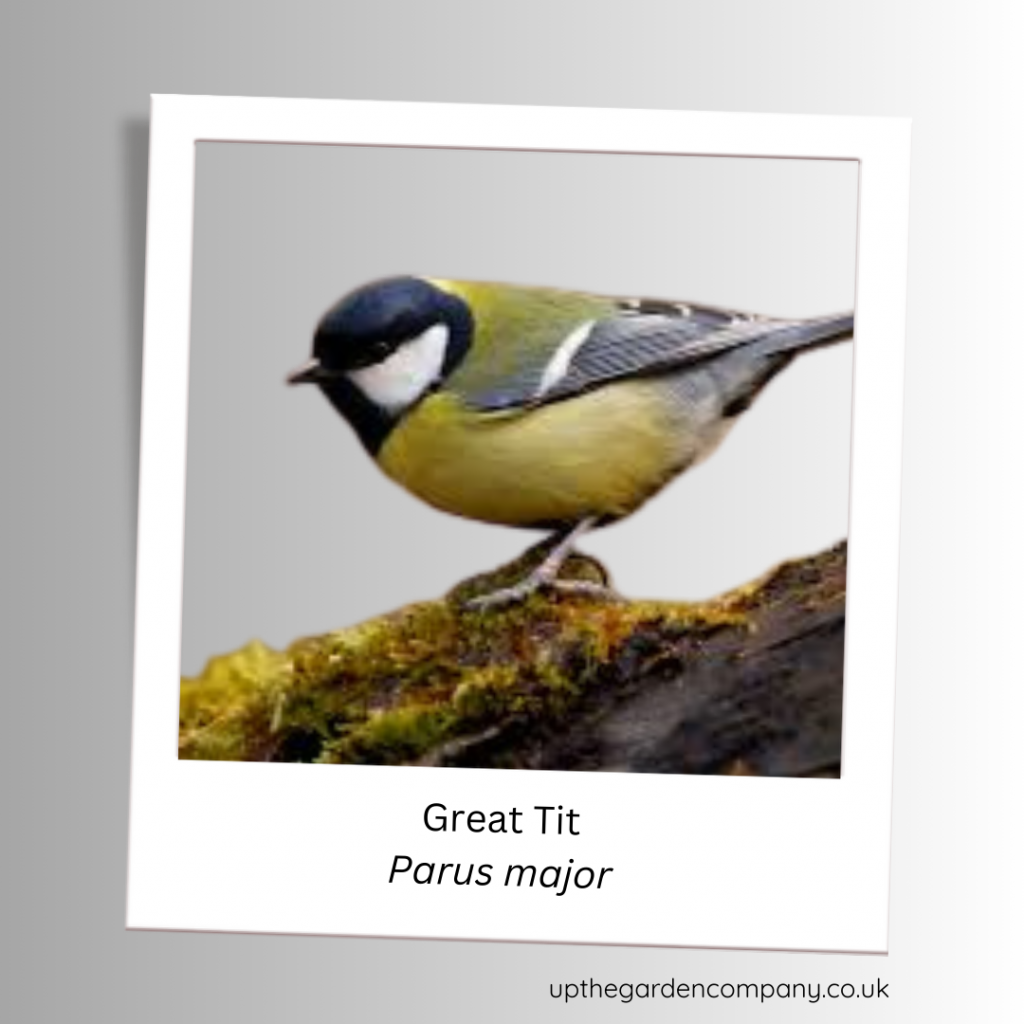
How to Spot:
- Size: Around 14cm long, noticeably larger than the blue tit.
- Colours: Black head, white cheeks, green back and vibrant yellow belly with a black stripe.
- Fun Fact: Great tits are highly adaptable and have learned to open milk bottle tops for cream!
Tip to Attract Great Tits:
Fill your feeders with mixed seeds, and ensure nesting sites are available.
4. House Sparrow
Once a common sight everywhere, house sparrow numbers have sadly declined, making their appearance even more precious. These sociable, chirpy birds often flutter in groups.
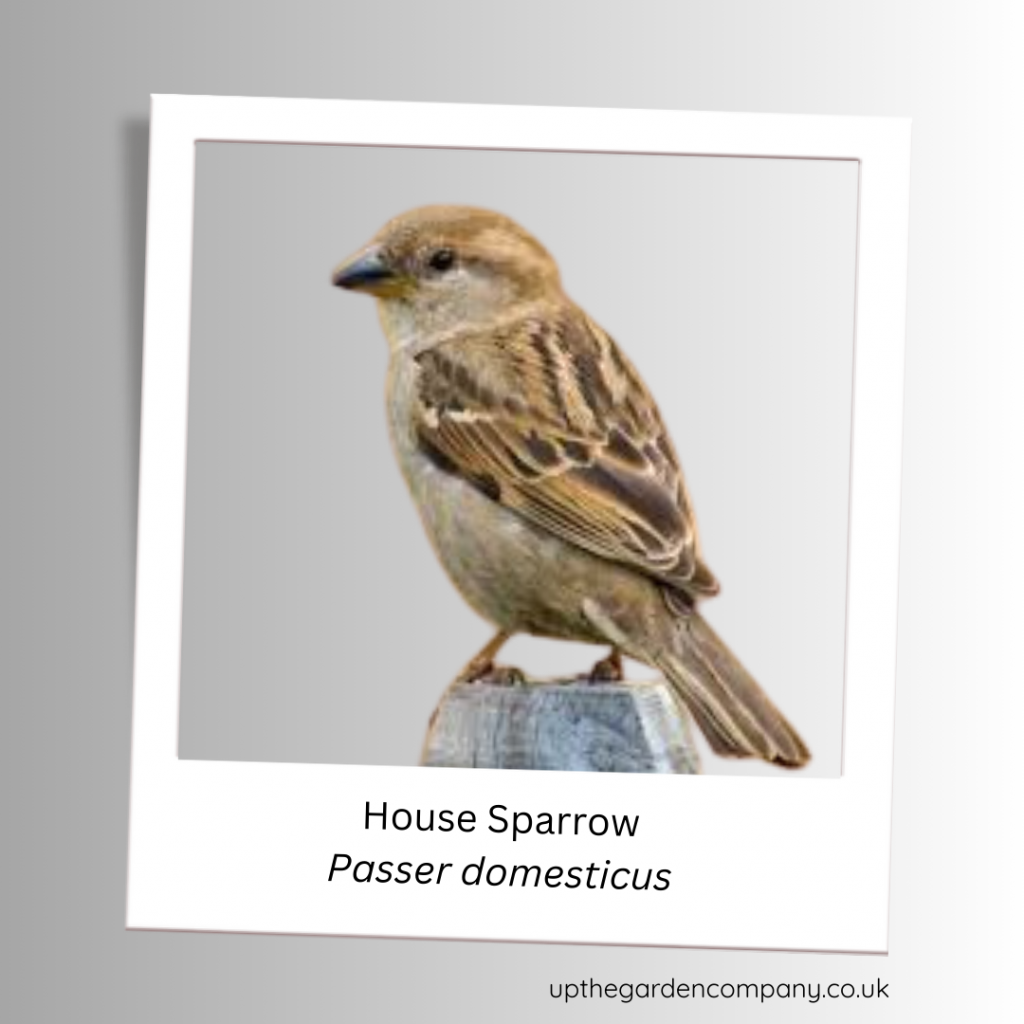
How to Spot:
- Size: About 16cm, with a stocky build.
- Colours: Males have a grey cap, brown back and a black bib; females are more uniformly brown.
- Fun Fact: House sparrows are communal birds and love company—they’ll even bathe together!
Tip to Attract House Sparrows:
Provide seeds and grains in a ground feeder and leave a bird bath for them to splash in.
5. Blackbird
The rich, melodic song of the blackbird is unmistakable. While males sport jet-black feathers and bright yellow beaks, females are brown and speckled.
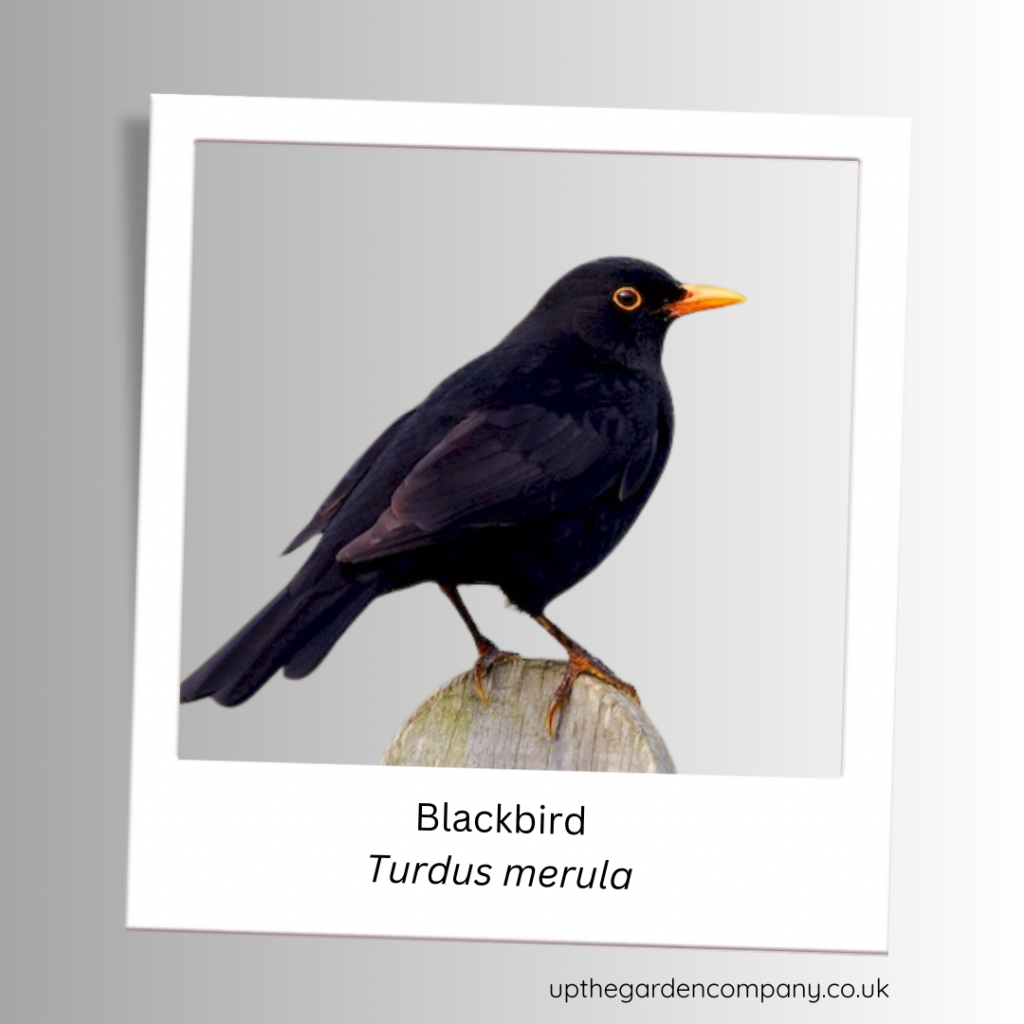
How to Spot:
- Size: Approximately 25cm.
- Colours: Males are black with yellow beaks; females are brown with speckles.
- Fun Fact: Blackbirds are early risers; they’re often the first to sing in the morning!
Tip to Attract Blackbirds:
Offer fruits like apples and raisins. They also love earthworms on the lawn.
6. Goldfinch
With its striking red face and vibrant yellow wing bars, the goldfinch is a true garden gem. Their tinkling, melodic song matches their colourful appearance.
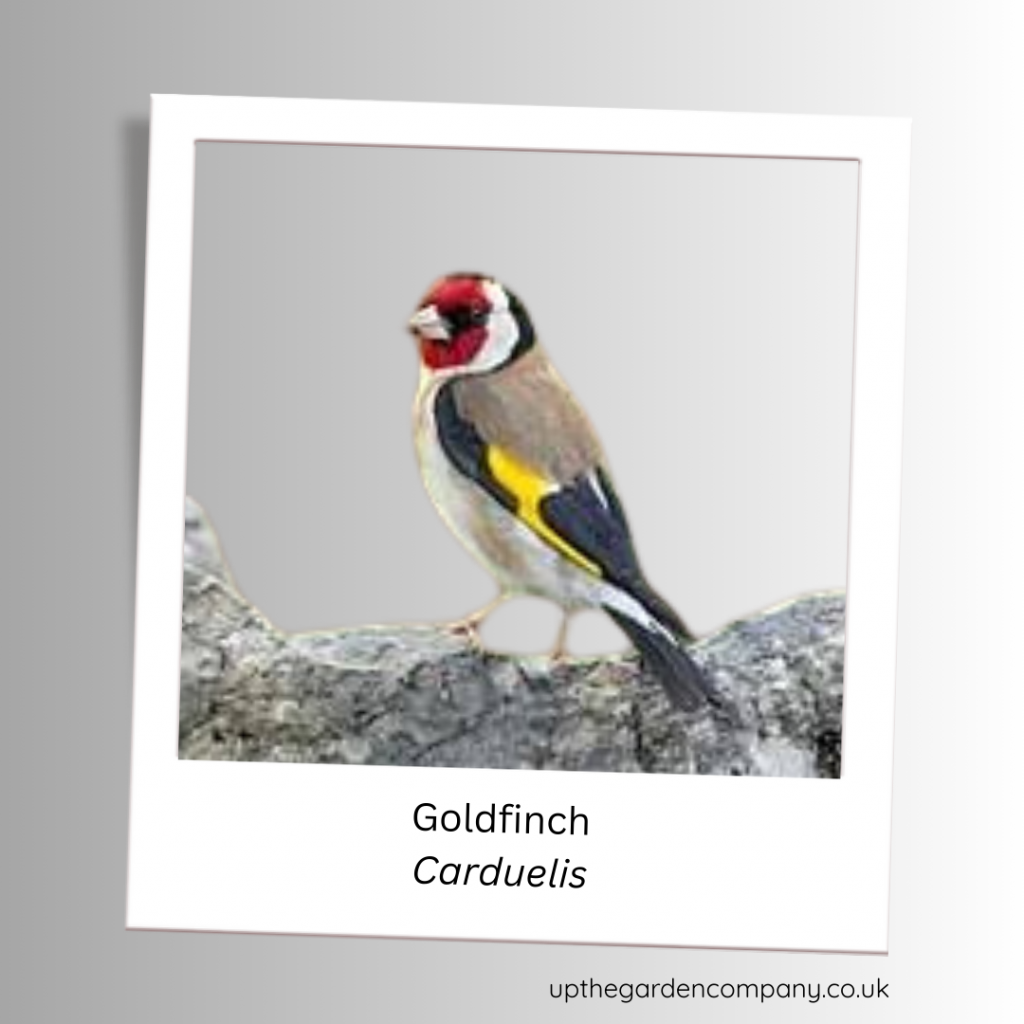
How to Spot:
- Size: Small, at around 12cm.
- Colours: Red face, white cheeks, golden wings and brown body.
- Fun Fact: Goldfinches are fondly referred to as “charms,” thanks to their cheerful calls and sociability.
Tip to Attract Goldfinches:
Nyjer seeds are their absolute favourite—use a specialist feeder to keep them coming back.
7. Song Thrush
Known for its beautiful, repetitive songs, the song thrush brings poetry to any garden. These medium-sized birds are experts at cracking snail shells to feast on the goodies inside.
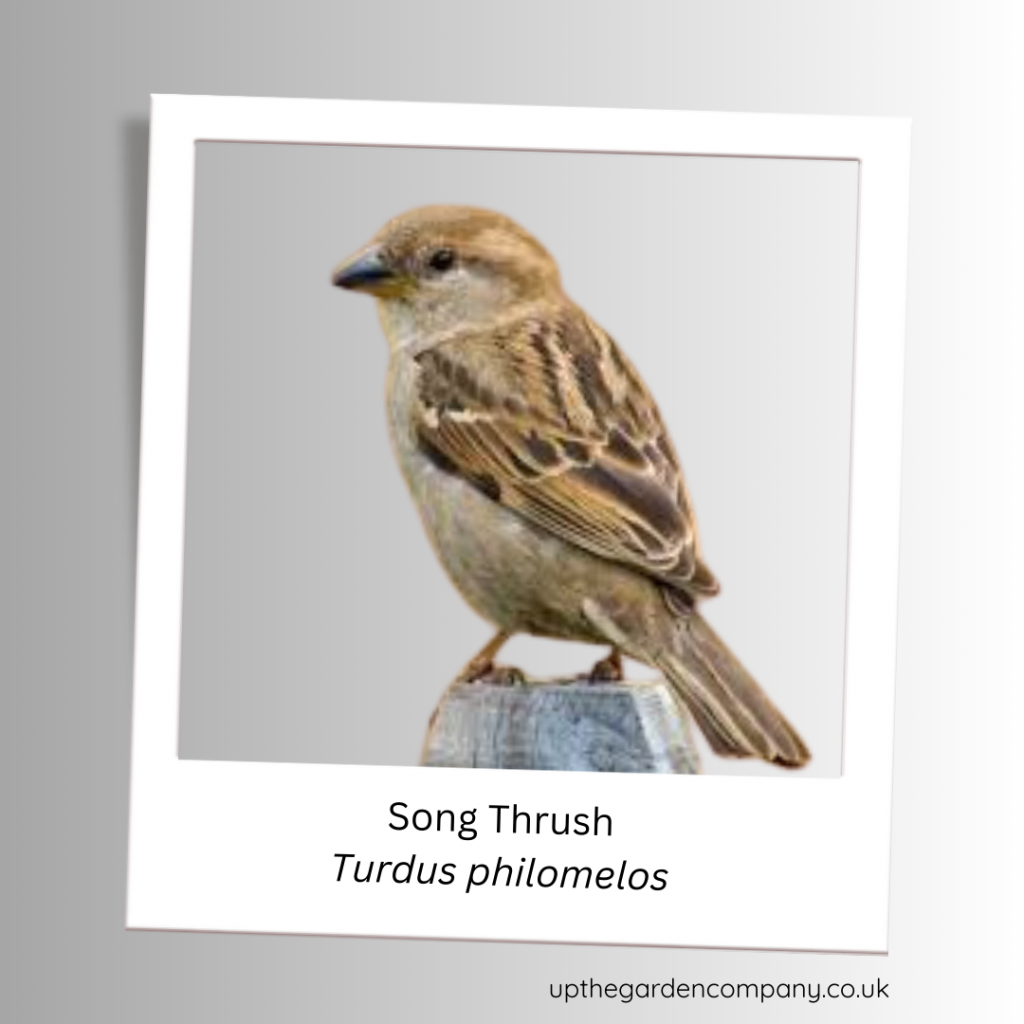
How to Spot:
- Size: About 23cm, similar to a blackbird.
- Colours: Brown with darker streaks and a cream belly.
- Fun Fact: Thrushes use rocks as anvils to break open snail shells.
Tip to Attract Song Thrushes:
Leave out fruit and worms and keep an untidy corner in your garden for foraging.
8. Woodpigeon
Familiar and often underestimated, woodpigeons are the largest of the garden birds. Their gentle cooing and distinctive white neck patch make them easy to identify.
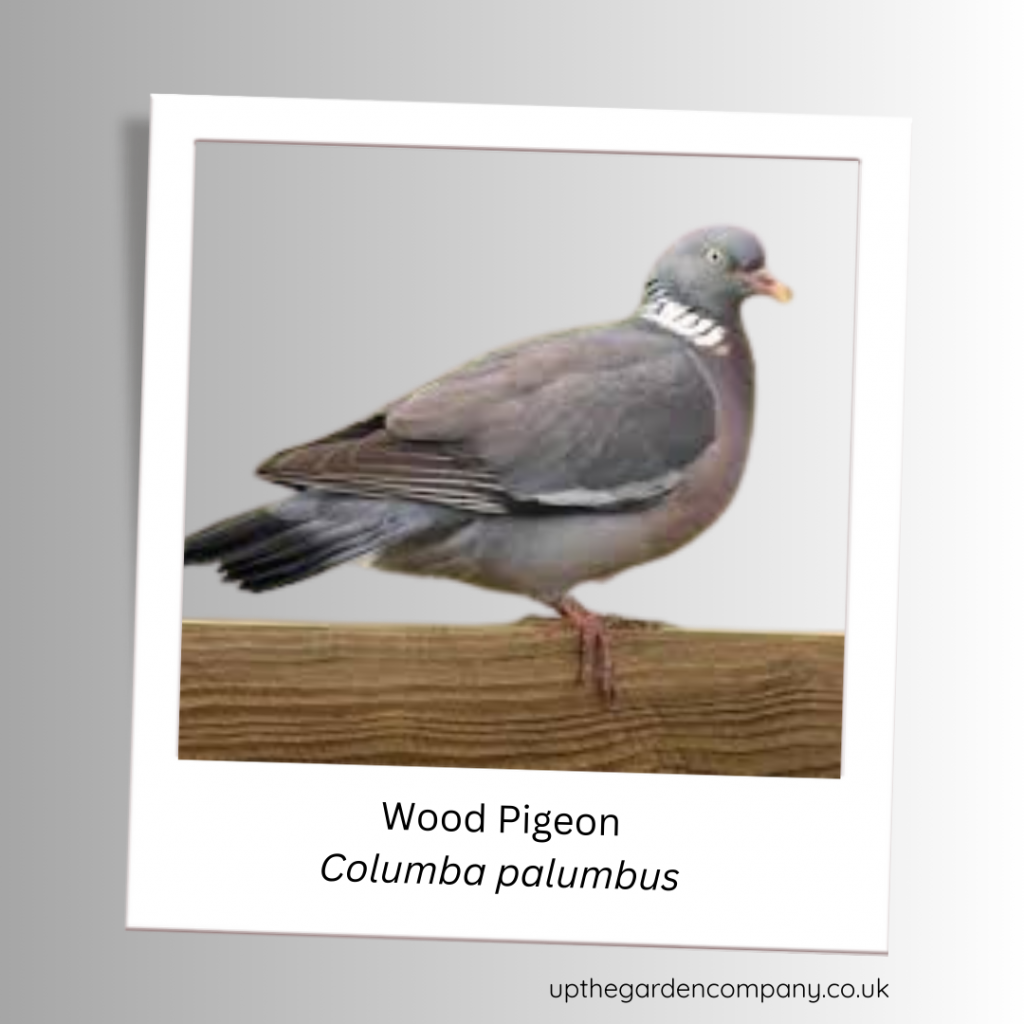
How to Spot:
- Size: A hefty 40cm.
- Colours: Grey body, pinkish chest, white neck patch, and green iridescence.
- Fun Fact: A woodpigeon’s diet is incredibly varied—they’ll happily munch on berries, seeds and even crops.
Tip to Attract Woodpigeons:
Scatter seeds and grains on the ground, as they rarely use hanging feeders.
9. Chaffinch
Chaffinches are one of the UK’s most colourful garden birds. The males, with their bold pink breasts and blue-grey caps, are particularly eye-catching.
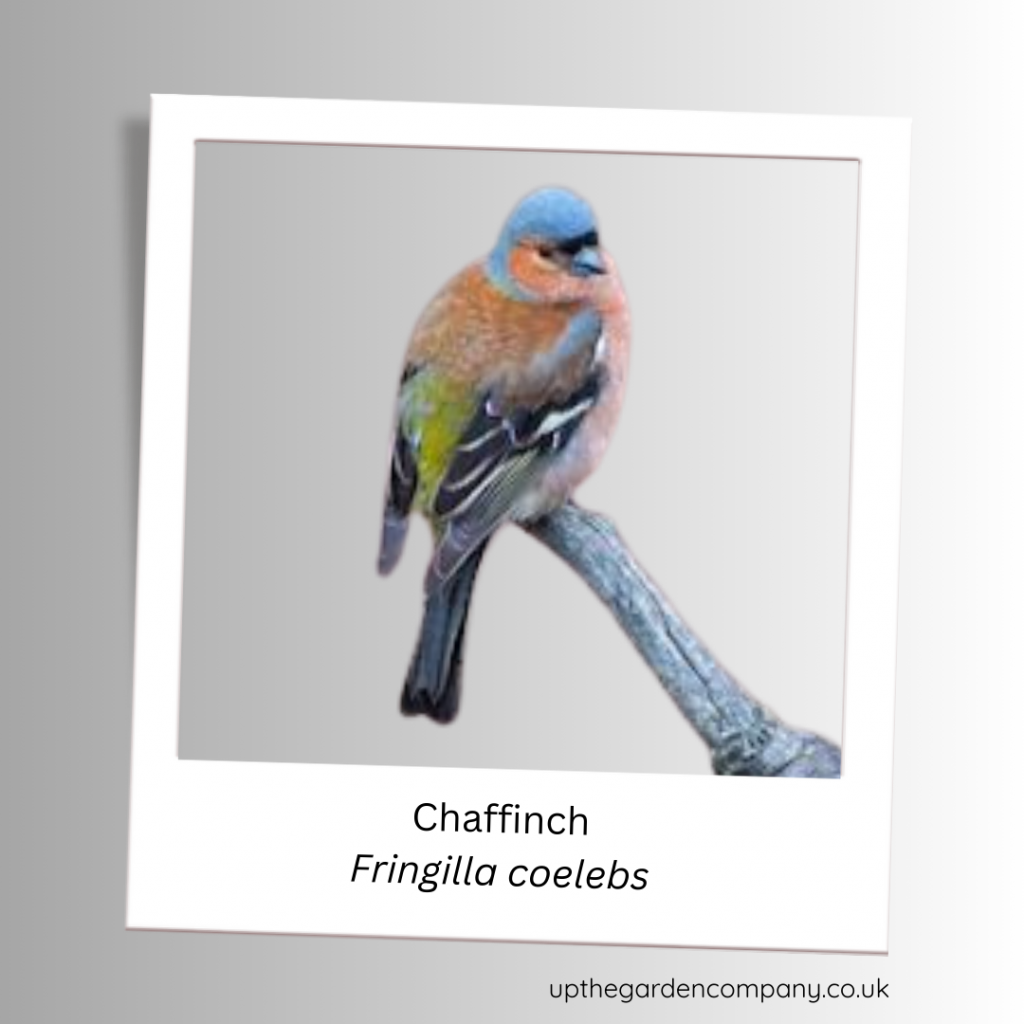
How to Spot:
- Size: Medium, at around 15cm.
- Colours: Males have pinky-orange underparts, females are more muted in browns.
- Fun Fact: Their zippy song often ends with a flourish, earning them the nickname “Cock Robin’s Footman.”
Tip to Attract Chaffinches:
Sunflower seeds and peanuts are a huge hit with these feathered friends.
10. Wren
Last but by no means least, the tiny wren punches well above its weight. Despite its small size, the wren’s song can be incredibly loud, filling your garden with lively energy.
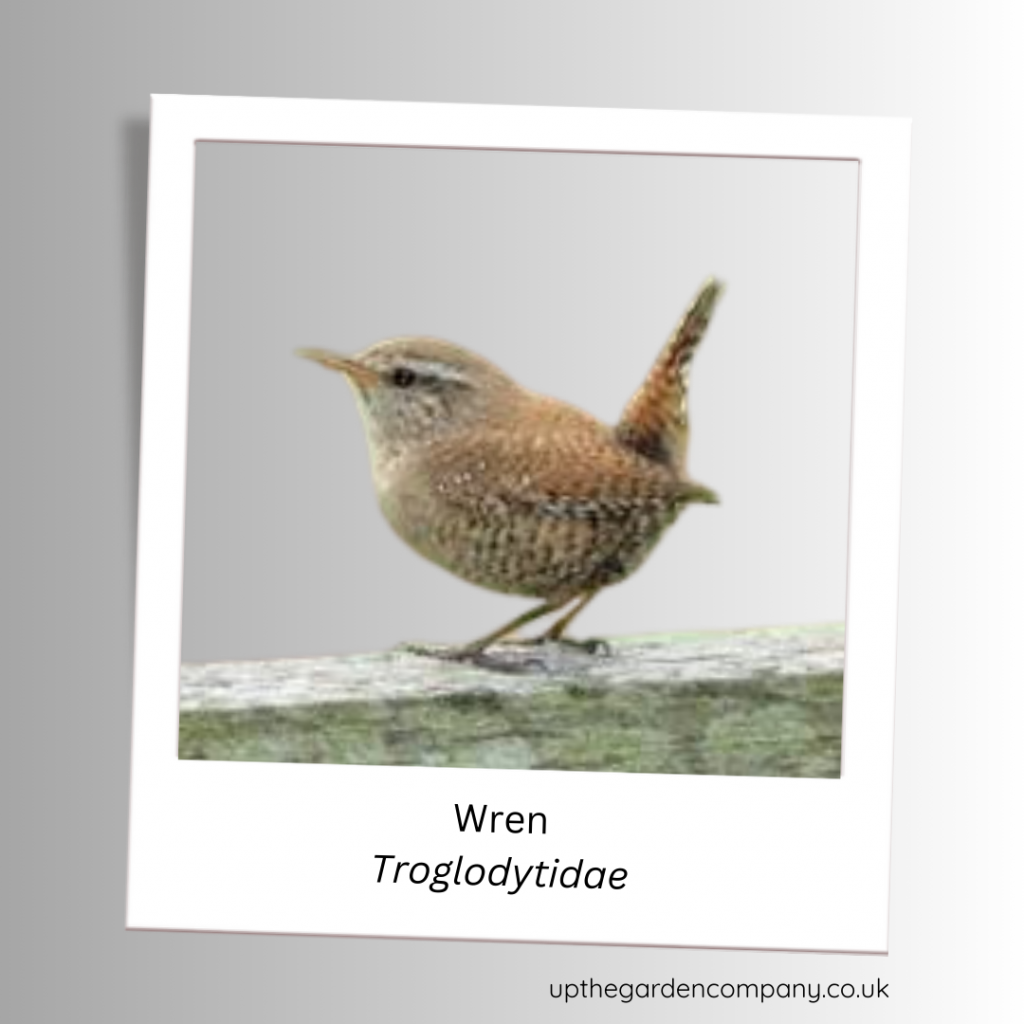
How to Spot:
- Size: Tiny at just 10cm.
- Colours: Brown with a perky tail often held upright.
- Fun Fact: The wren is one of the most common birds in the UK and holds a special place in folklore.
Tip to Attract Wrens:
Offer insects and keep a cosy shrub area for them to hide in.
Final Thoughts & Your Call to Action
Next time you step into your garden, take a moment to observe the feathered visitors flitting about. Each bird tells a story—adding colour, music and wonder to our daily lives.
Want to attract even more birds? Add a bird feeder, keep a water source fresh, and plant native shrubbery for nesting.
Now it’s over to you! Keep a notebook to record your sightings or invest in a pair of binoculars for better views. The RSPB’s free bird ID app can also help you learn as you go.
Start your birdwatching adventure today, and who knows? You might just find a “charm” of goldfinches or a curious robin watching you back! 🐦
Further Reading: RSPB, RSPB Birdwatch 2025, How to Create and Maintain a Garden Pond, Save the Bees Protect the Planet Support the Soil Association’s Neonicotinoid Campaign
